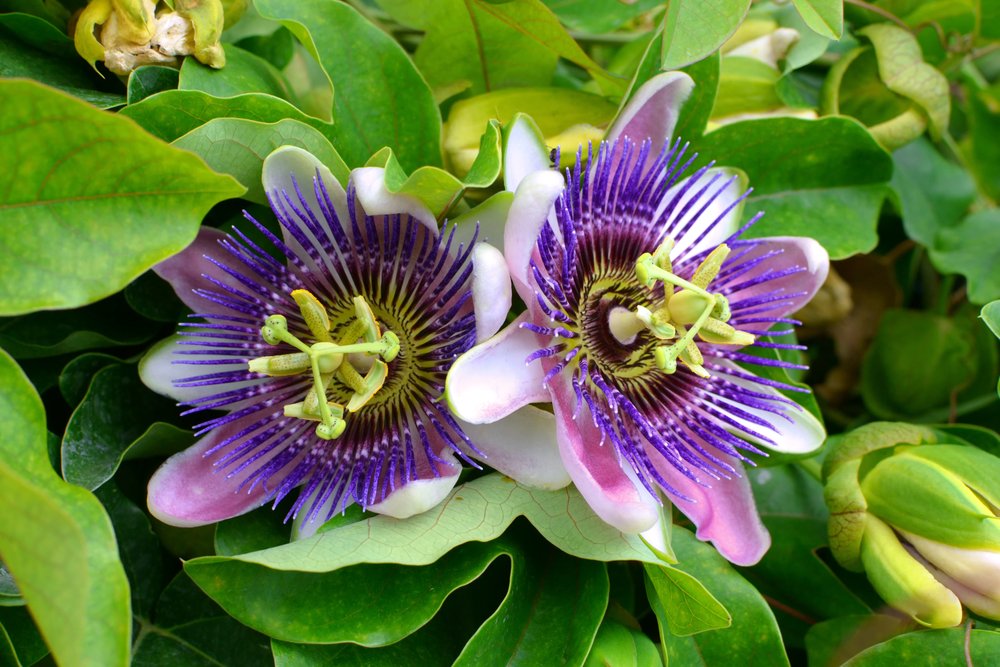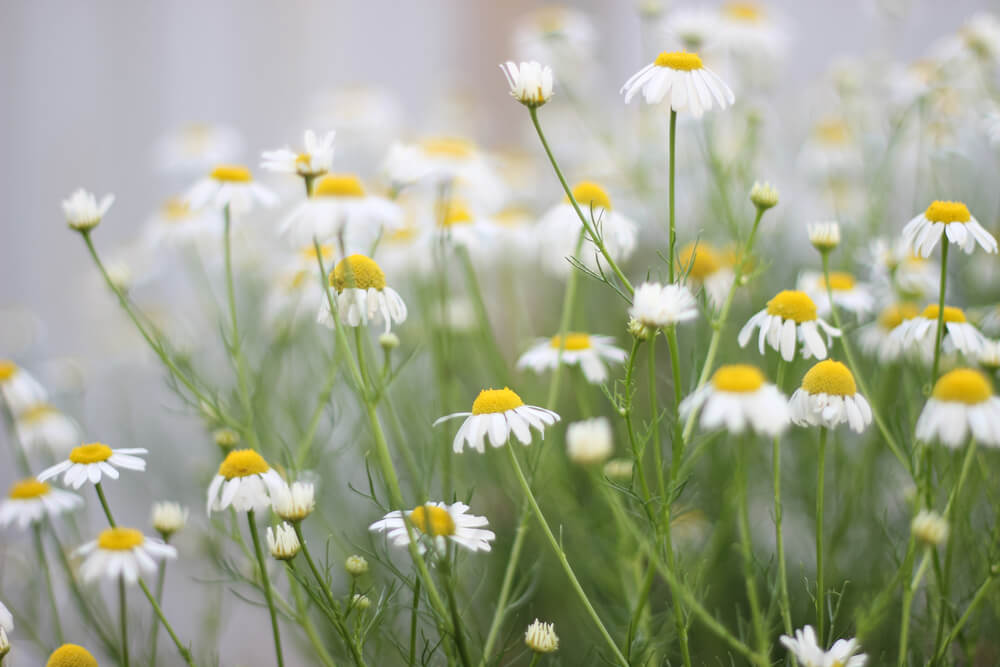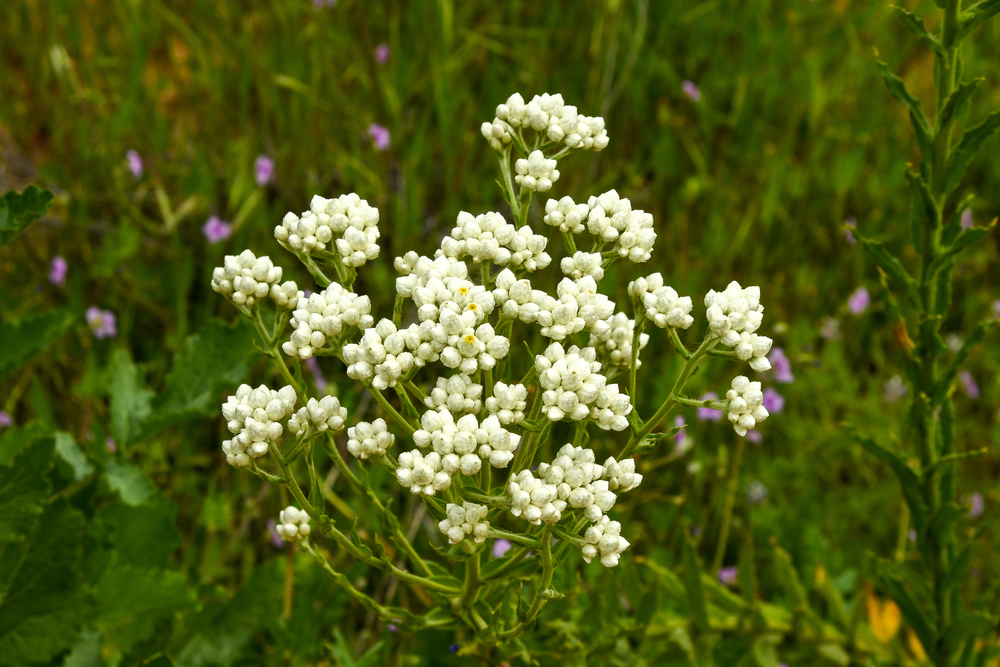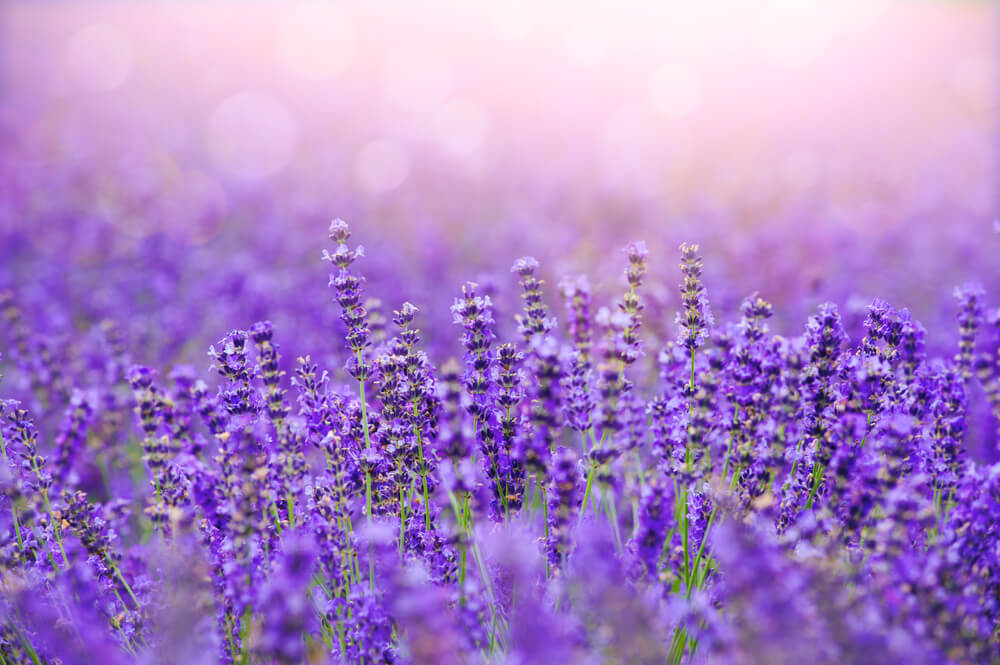Smokable Plants You Can Grow That Aren’t Marijuana Part 2
Smoke ‘em if you’ve grown ‘em.
Smokable Plants You Can Grow That Aren’t Marijuana Part 2
Smoke ‘em if you’ve grown ‘em.

Passion flower has a long history of being used as a sedative. by oraziopuccio/Shutterstock
If you’ve started a garden over the past year, you may have fed your family with the produce you’ve grown. But have you smoked any of it?
About three years ago, we compiled a list of seven smokable plants you can grow that aren’t marijuana. Earlier this month, New York became the 15th state to legalize recreational marijuana, but there are still plenty of parts of the country where it isn’t legal. It also remains illegal on the federal level.
In the meantime, we’re bringing you six more smokable plants that you can grow in your backyard.

Lion’s Tail (Leonotis leonurus)
Herbal history: Lion’s Tail is a popular alternative to tobacco that is said to have anti-inflammatory properties.
Smoking qualities: This plant has been compared to a toned-down version of cannabis. When its petals are smoked, it produces a mild, calming, euphoric effect.
Plant profile: Lion’s Tail is a perennial plant, native to South Africa, identified by its coils of bright, spiky orange flowers along the stalk. It grows up to 5 feet in height.
Grow tips: Grow this one from the seed, as finding a full-grown plant from a nursery is typically challenging. Start your seeds indoors and ensure that when it is time to plant that the temperatures are higher than 20°F. This plant prefers full sun and sandy soil.

Roman Chamomile (Chamaemelum nobile)
Herbal history: Though we know this plant more commonly for its use in tea to calm nerves, soothe digestive tracts and put us to sleep, you can also smoke it! Chamomile has traditionally been used as an anti-inflammatory.
Smoking qualities: Chamomile has a mild, fruity body when smoked. It provides an anti-spasmodic and sedative effect, which will relax your mind and reduce tension.
Plant profile: This is a perennial plant, native to Europe with a summer-fall growing season. It has daisy-like flowers with ascending stems. It can grow about three to six inches tall and 10 to 12 inches wide.
Grow tips: This plant prefers full sun, but it can grow in partial shade. It thrives in light, compost-rich soil that is moist and well drained. However, it’s recommended that you allow your plants to dry out each time you decide to water. Ideal temperature is 60-68°F.

Rabbit Tobacco (Pseudognaphalium obtusifolium)
Herbal history: Historically, the Native American population has used this plant to treat everything from asthma, colds, coughs, flu, pneumonia, bronchitis, diarrhea and insomnia. It’s also been smoked as an alternative to tobacco.
Smoking qualities: Rabbit tobacco is said to have a mild sedating effect and provides some relief to symptoms of asthma and similar respiratory ailments. It has a maple-like smell, but it has been described to have a sharp, bitter taste when smoked.
Plant profile: This is a summer annual or biennial plant that can reach one to 2.5 feet in height. It has narrow elliptical leaves and stiff silvery stems. It produces clusters of small white flowers that quickly become brown.
Grow tips: Despite being a wild flower that grows in heavy clay soils and dry areas, you can purchase the seeds from this plant. It prefers sandy, well-drained soil and full sun.

Passion Flower (Passiflora incarnata)
Herbal history: Indigenous people in North and South America historically used passion flowers as a sedative. Today, it is commonly used to treat anxiety, restlessness, insomnia and various forms of pain. Passion flower has been thought to have compounds that increase serotonin levels in the body and a recent study compared this herb to a drug similar to Valium, finding it was equally as effective.
Smoking qualities: When smoked, passion flower tastes smooth, earthy and clove-like. It produces a mildly sedating, calming effect.
Plant profile: This vibrant plant is a perennial with curly petals. Though typically recognized by its purple flower, it can bloom in shades of red and yellow. Because it is a vine plant, it can grow up to 30 feet long.
Grow tips: The ideal growing temperature for this flower is between 60°F and 90°F, but it will not tolerate anything below 55°F very well. It needs full sun and well-drained soil. You can give it two applications of fertilizer each year: one at the start of planting and one in the middle of summer. Because they are a vine flower, we suggest growing them along a trellis.

Lavender (Lavandula)
Herbal history: Lavender has been used for more than 2,000 years in everything from mummification, repelling insects, treating insomnia, aching backs and insanity. Regarded for antiseptic and antibiotic properties, this plant was also applied to bacterial infections, burns, wounds, bites and stings. Today, it’s most commonly known as a key plant in aromatherapy for its calming, mood balancing effects.
Smoking qualities: When smoked, this plant provides a smooth, floral punch. Due to a compound in this plant called linalool, which is known for sending signals to your brain to tell your body to relax, it will ease stress, anxiety, induce sleep and lower your blood pressure.
Plant profile: Lavender is native to the Mediterranean. It is a drought-tolerant perennial plant with thin leaves that can grow to be one to three feet tall. Its spiky purple flowers alone can grow up to 16 inches. It blooms in the summer.
Grow tips: This plant prefers full sun. It will thrive in dry to medium soil that is sandy and well drained. Keep this purple plant away from wet, moist areas, as it is susceptible to root rot. The ideal temperature is 45-70°F.

St. John’s Wort (Hypericum perforatum)
Herbal history: St. John’s Wort’s medicinal uses date back to ancient Greece, where it was used to treat various nervous disorders. Recent European studies have shown its effectiveness for treating mild to moderate depression, and other tiny pilot studies have shown it could be effective for premenstrual dysphoric disorder (PMDD), psoriasis and atopic dermatitis.
Smoking qualities: If smoked, this plant acts as a mood-elevating sedative, easing tension throughout the body. The taste is slightly sweet and bitter.
Plant profile: This is a shrubby perennial plant, notably distinguished by its vibrant yellow flowers that grow on their own or in clusters. It can grow one to three feet tall and has dense upright branches with red to purple bark.
Grow tips: If you have a shorter growing season, feel free to start your seeds indoors as St. John’s Wort transplants well. It thrives in full sun and likes sandy, rocky soil. When you are first trying to grow it, it’s important to keep the soil moist and well watered. Once it matures it is quite drought tolerant.
Follow us
This work is licensed under a Creative Commons Attribution-NoDerivatives 4.0 International License.
Want to republish a Modern Farmer story?
We are happy for Modern Farmer stories to be shared, and encourage you to republish our articles for your audience. When doing so, we ask that you follow these guidelines:
Please credit us and our writers
For the author byline, please use “Author Name, Modern Farmer.” At the top of our stories, if on the web, please include this text and link: “This story was originally published by Modern Farmer.”
Please make sure to include a link back to either our home page or the article URL.
At the bottom of the story, please include the following text:
“Modern Farmer is a nonprofit initiative dedicated to raising awareness and catalyzing action at the intersection of food, agriculture, and society. Read more at <link>Modern Farmer</link>.”
Use our widget
We’d like to be able to track our stories, so we ask that if you republish our content, you do so using our widget (located on the left hand side of the article). The HTML code has a built-in tracker that tells us the data and domain where the story was published, as well as view counts.
Check the image requirements
It’s your responsibility to confirm you're licensed to republish images in our articles. Some images, such as those from commercial providers, don't allow their images to be republished without permission or payment. Copyright terms are generally listed in the image caption and attribution. You are welcome to omit our images or substitute with your own. Charts and interactive graphics follow the same rules.
Don’t change too much. Or, ask us first.
Articles must be republished in their entirety. It’s okay to change references to time (“today” to “yesterday”) or location (“Iowa City, IA” to “here”). But please keep everything else the same.
If you feel strongly that a more material edit needs to be made, get in touch with us at [email protected]. We’re happy to discuss it with the original author, but we must have prior approval for changes before publication.
Special cases
Extracts. You may run the first few lines or paragraphs of the article and then say: “Read the full article at Modern Farmer” with a link back to the original article.
Quotes. You may quote authors provided you include a link back to the article URL.
Translations. These require writer approval. To inquire about translation of a Modern Farmer article, contact us at [email protected]
Signed consent / copyright release forms. These are not required, provided you are following these guidelines.
Print. Articles can be republished in print under these same rules, with the exception that you do not need to include the links.
Tag us
When sharing the story on social media, please tag us using the following: - Twitter (@ModFarm) - Facebook (@ModernFarmerMedia) - Instagram (@modfarm)
Use our content respectfully
Modern Farmer is a nonprofit and as such we share our content for free and in good faith in order to reach new audiences. Respectfully,
No selling ads against our stories. It’s okay to put our stories on pages with ads.
Don’t republish our material wholesale, or automatically; you need to select stories to be republished individually.
You have no rights to sell, license, syndicate, or otherwise represent yourself as the authorized owner of our material to any third parties. This means that you cannot actively publish or submit our work for syndication to third party platforms or apps like Apple News or Google News. We understand that publishers cannot fully control when certain third parties automatically summarize or crawl content from publishers’ own sites.
Keep in touch
We want to hear from you if you love Modern Farmer content, have a collaboration idea, or anything else to share. As a nonprofit outlet, we work in service of our community and are always open to comments, feedback, and ideas. Contact us at [email protected].by Lindsay Campbell, Modern Farmer
April 18, 2021
Modern Farmer Weekly
Solutions Hub
Innovations, ideas and inspiration. Actionable solutions for a resilient food system.
ExploreShare With Us
We want to hear from Modern Farmer readers who have thoughtful commentary, actionable solutions, or helpful ideas to share.
SubmitNecessary cookies are absolutely essential for the website to function properly. This category only includes cookies that ensures basic functionalities and security features of the website. These cookies do not store any personal information.
Any cookies that may not be particularly necessary for the website to function and are used specifically to collect user personal data via analytics, ads, other embedded contents are termed as non-necessary cookies.
A dry herb vaporiser would be recommended rather than smoking the herb as it delivers the smokeless vapour without burning most of the herbs benefits unlike a pipe, bong or joint which will create health issues. Again, it’s not bad to ingest these herbs in moderation but it’s HOW you ingest them which really matters…
Thank you for the Awesome information, much appreciated!!!
Thank you for this!
I’m just looking for a substitute for tobacco, to roll my joints with.. Mainly smoke hashish..just worried I’ll be told 10yrs down the line, it’s as bad as tobacco or worse..What I can say is, no more dryness of the mouth…
What about Salvia Devorium (Spelling may be wrong)
This just in from the Sydney Morning Herald [published January 8, 2011]:
Smoking any substance is bad for you. I’m surprised that this made it into your blog.
It’s time to seek some medical help with your addiction if you’re actively looking for everything that can possibly be rolled and smoked.